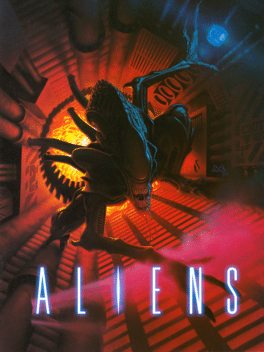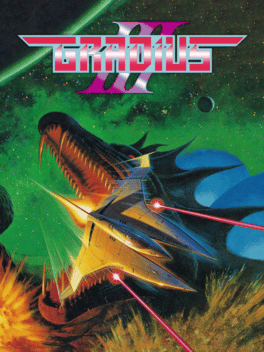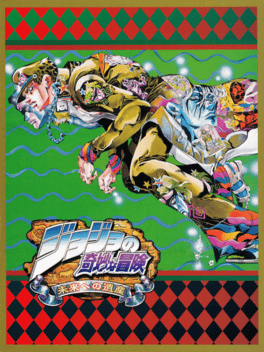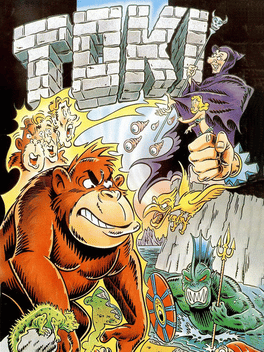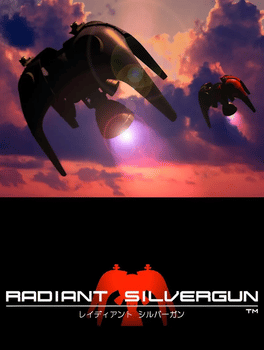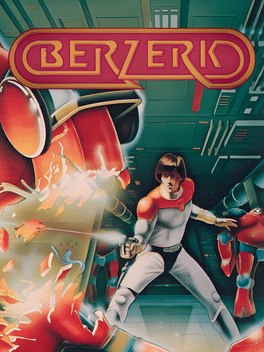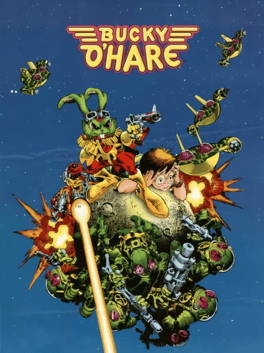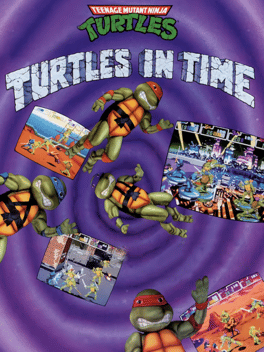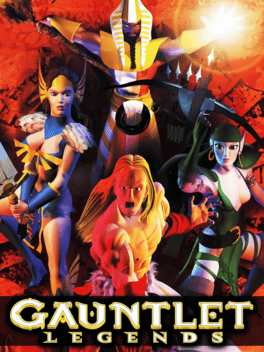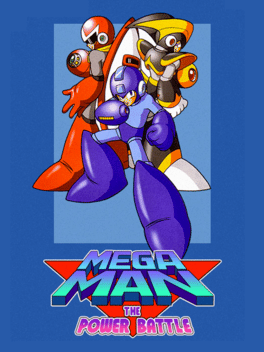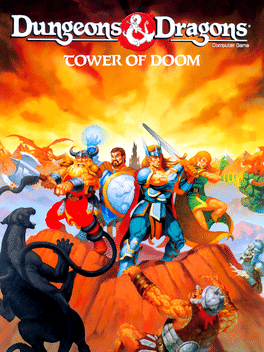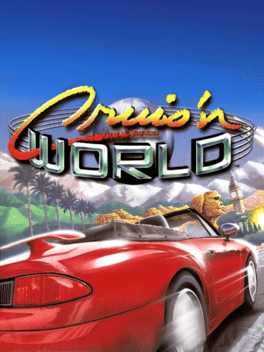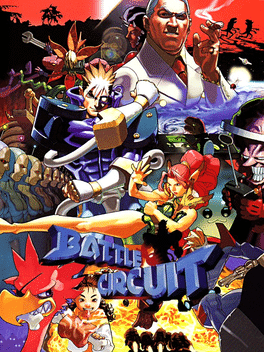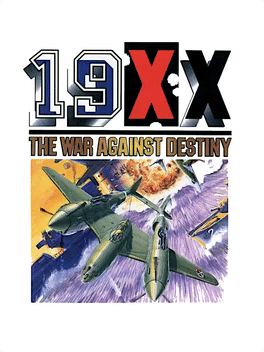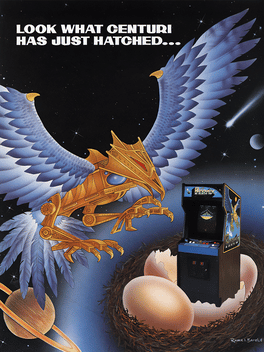Most Popular Arcade Games - Page 3
-
Aliens
1990
Aliens
1990
star 7.9Aliens is an arcade game based loosely on the 1986 movie Aliens. You and a friend play female Marines and you must explore and destroy all aliens who have taken over a now abandoned space settlement LV426 Acheron. If you can find any survivors try to rescue them. As well as your normal gun there are other weapons that can be used to help you. A Caterpillar P-5000 can also be found and used. Aliens is mainly a side view horizontal shooter where the screen scrolls as you move from left to right. Some parts of the game require you to look behind the hero firing into the screen as aliens come towards from the distance as well as moving in other directions like in a lift. You can also be driving into the screen trying to shoot aliens. -
Gradius III
1989
Gradius III
1989
star 7In the darkest reaches of infinite space, pure evil lies in wait ... The Dark Forces led by the god of destruction, Bacterian, prepare to launch a massive onslaught against the planet Gradius. Possessing unstoppable power, the Dark Forces threaten to plunge the Universe into total war and complete annihilation. Their invasion force smashes the Gradius defenses, and the surrounding planets soon fall like dominoes. Now Bacterian's evil grasp reaches for the heart of the resistance...planet Gradius itself... To counter the oncoming threat the United Gradius World Forces gather all their fighter craft. Half of them form a defensive net - the other half a strike team. But they are badly outnumbered and The Dark Forces easily tear through their thin frontline. No fighters survive the slaughter.... In a last gasp move, the United Gradius World Forces send out two fighters, previously considered too dangerous for combat missions: The InterDimensional VIC VIPER fighters. The Fighters take off for the heart of darkness t -
JoJo's Bizarre Adventure: Heritage for the Future
1999
star 8JoJo's Bizarre Adventure: Heritage for the Future is the updated version of JoJo's Bizarre Adventure game released in 1998 on arcade by Capcom. It became the sixth and last game released for the CPS-3 board. -
Toki
1989
Toki
1989
star 7.9The hero of the game is a young jungle-man named Toki. One day the evil wizard Dr. Stark kidnaps his girlfriend Wanda. When Toki tries to save her, he is turned into a monkey! Now Toki has to find Dr. Stark in his palace, rescue Wanda, and become a human being again! -
Radiant Silvergun
1998
Radiant Silvergun
1998
star 8.6Unlike in most other shoot 'em ups, there are no power-ups. All weapons are available from the start. Weapons can 'level up', however, becoming more powerful as the player uses them to score points. There are a selection of 7 weapons that can be used at any given time: The game is designed so that there is almost always a 'right' weapon for any situation. The bosses in the game are designed so that they have multiple 'sections' which, if all destroyed before the 'core' of the boss, will award the players with point bonuses. Being able to apply the right weapons on any different boss is key to obtaining these bonuses. For example, a boss may have two sections located on either side of the screen. You could immediately go up to one and begin shooting it with a vulcan, or you could hover in the centre and hit both at the same time with the side bombs. This would increase your chance of obtaining the bonus before the time limit runs out and the boss self-destructs. The game rewards players for "chaining" enemies of j -
Berzerk
1980
Berzerk
1980
star 7.2Maneuver your humanoid through the electrified mazes of robot filled rooms. You many kill off the first group of robots but initial success does not mean survival...future groups begin firing at your! Added danger lurks when Evil Otto enters. He can jump the maze walls and squash you if you linger too long! -
Bucky O'Hare
1992
Bucky O'Hare
1992
star 8.7This video game is based on the cartoon television series Bucky O'Hare and the Toad Wars under license from Hasbro, Inc. While it is generally classified as a scrolling fighting game, utilizing a Final Fight-esque landscape, the player's character is also armed with a laser gun, adding in elements of a scrolling shooter. However, if the character is extremely close to an enemy, he will throw out his fists to attack - a precursor to the characters featured in Metal Slug, who use knives in close combat. Much like the cartoon, Bucky O'Hare features colorful animation, and voice actors from the series were hired to participate in the game's cut scenes. The player chooses from five protagonists: Bucky O'Hare, the heroic rabbit captain of the space ship Righteous Indignation; Jenny, an "Aldebaran cat" and telepath; Dead-Eye Duck, a four-armed mallard; Willy, a kid from earth that replaced their engineer, and Blinky, a one-eyed android. As in the television series, the characters must stop the Toad Empire from invading -
Teenage Mutant Ninja Turtles: Turtles in Time
1991
star 7.7The original arcade version of Teenage Mutant Ninja Turtles: Turtles in Time, which is shorter than the latter console version. -
Gauntlet Legends
1998
Gauntlet Legends
1998
star 7.6Gauntlet Legends is an arcade game released in 1998 by Atari Games. It is a fantasy themed hack and slash styled dungeon crawl game, a sequel to 1985's popular Gauntlet and 1986's Gauntlet II and marks the final game in the series to be produced by Atari Games. Its unusual features for an arcade game included passwords and characters that could be saved, enabling players to play over the course of a long period. -
Mega Man: The Power Battle
1995
star 6.5Mega Man: The Power Battle, known in Japan as Rockman: The Power Battle, is an arcade video game and a spin-off title for the Mega Man series. It was released in Japan in 1995 and was followed by a sequel, Mega Man 2: The Power Fighters, the following year. -
Golden Axe: The Revenge Of Death Adder
1992
star 7.4Golden Axe: The Revenge of Death Adder is a side-scrolling arcade hack 'n' slash game released in 1992 by Sega. It was the first 32-bit game in the series. It still remains an arcade exclusive as of 2010. The player characters are Goah the giant, Stern the barbarian, Dora the Kentauride, and Little Trix, a young elf lad who carries a pitchfork. None of the characters from the first game are playable, although Gilius Thunderhead from the first game rides on Goah's back. The main enemy is once again Death Adder. -
Dungeons & Dragons: Tower of Doom
1994
star 7.8Tower of Doom is a side-scrolling arcade game featuring four different characters (cleric, dwarf, elf, fighter) fighting iconic Dungeons & Dragons monsters. Bosses include a troll that regenerates unless burned, a large black dragon, the dreaded Shadow Elf (Mystara's equivalent of the drow), a beholder, the optional superboss Flamewing (a great wyrm red dragon) and the final boss Deimos (an archlich). At points in the game the players are presented with a choice of paths to take to continue progress. Each path goes to a different area, and it is impossible to visit every area in a single play. The gameplay is more technical than the average on beat'em up games. In addition to the usual basic attacks and jumping it includes blocking, strong attacks, turning attacks, dashing attacks, crouching and evading. It also requires the use of careful tactics, as most enemies have the same abilities as the heroes and can out-range them, too. Daggers, hammers, arrows and burning oils can be used as throwing weapons, and many -
Tapper
1983
-
Double Dragon 3: The Rosetta Stone
1990
star 5.3The final game in the original trilogy. Billy and Jimmy Lee are returning from martial arts training when their paths cross a fortune teller. She tells them of a great evil in Egypt, their strongest adversary yet, and how the Rosetta Stones can aid them. This game features weapon shops where Billy and Jimmy can buy power-ups, tricks, energy and extra lives to aid them in their quest. Power-ups make Billy and Jimmy twice their size, increasing their damage done and range of attack. The character graphics have changed, moving away from cartoon style graphics to more realistic looking characters. -
Cruis'n World
1996
Cruis'n World
1996
star 7.2Cruis'n World is the 1996 sequel to the 1994 arcade racer Cruis'n USA. As the title implies, Cruis'n World allows players to race on various tracks around the world. The game also features more cars than Cruis'n USA. This game introduced stunts to the Cruis'n series. They served to dodge obstacles, take close curves and so. If the stunt makes the vehicle fly in the air, the game gives the player extra seconds of time. The game also uses small rocket boosts to speed up. The game was later released on the Nintendo 64 in 1998, being the best received of the Cruis'n ports. -
Super Breakout
1978
Super Breakout
1978
star 6.5Super Breakout is an arcade game released by Atari in 1978. It utilizes a Motorola M6502 (running up at 375 KHz) and, as the name suggests, is the sequel to Breakout, which was released two years earlier. There are three different modes to choose from: Double Breakout, the playfield for which contains in fifty-two orange blocks (5-14 points), fifty-two green blocks (1-6 points), two paddles and two balls, Cavity Breakout, which contains in forty-four orange blocks (7-21 points), and fifty-two green blocks (1-9 points), one paddle, and three balls (the second and third of which have to be freed before they come into play) and Progressive Breakout which contains fifty-two blue blocks (7 points) and fifty-two green blocks (5 points), one paddle, and one ball - and the blocks shall be lowered down towards the paddle, at a rate determined by the number of times the ball lands on your paddle, but as the ball destroys them, additional rows of blocks shall appear at the top of the screen and be lowered down towards the pad -
Battle Circuit
1997
Battle Circuit
1997
star 6.8Battle Circuit is a 2D side scrolling beat'em up drawn in a comic (manga) style in a futuristic science fiction setting. A group of bounty hunters must capture the mad scientist Dr. Saturn with a giant head. The roster of heroes has 5 characters for the player to choose from: Cyber Blue, a human bounty hunter with cybernetic attachments to his body; Captain Silver, a humanoid shape-shifting hunter who has ability to project ice particles from his body; Pink Ostrich, a large, sentient, pink ostrich, who is always accompanied by its owner, a young girl named Pola Abdul; Yellow Iris, a part-time fashion model with claws and Alien Green, a space creature looking like a giant, moving plant. Gameplay is quite typical for the genre, like in Final Fight, Streets of Rage, or Cadillacs and Dinosaurs - players go right, beat the enemies (player has access to various attacks), collect bonuses and money, and fight against bosses, for example Dr. Saturn and his robots. Players' abilities can be expanded by purchasing special " -
19XX: The War Against Destiny
1995
star 719XX: The War Against Destiny is a vertical scrolling shooter arcade game made by Capcom in 1995 (copyrighted in 1996). The game is the 4th of a series of World War II vertical shooters made by Capcom. The story takes place before a fictional war (Hence, the 19XX) as a lone pilot tries to defeat an entire army/evil organization from starting another World War, which soon escalates to a nuclear apocalypse. -
Phoenix
1980
Phoenix
1980
star 8.4In this shoot 'em up the player has to fight off four assault waves consisting of different enemy types until he reaches a huge UFO. After destroying the protective plates guarding the UFO's pilot in his cockpit the player can kill the pilot. The game starts anew with harder enemies. -
Qix
1981
